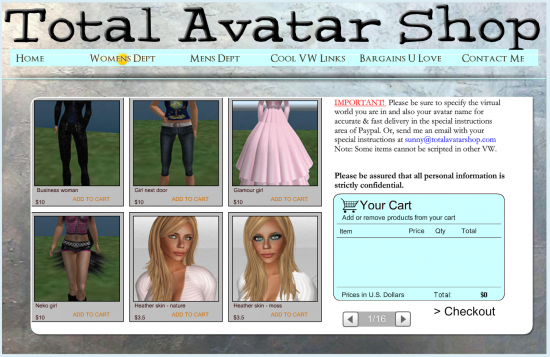In the face of recent grid outages and terms of service changes, it doesn’t just make sense to back up your content, as I urged content creators to do  so in my column on Sunday — it also makes sense to back up your customers.
No, that was weird. I don’t mean back up your customers. I mean, you should own your customer relationships instead of letting someone else get in the middle.
Say, for example, you sell stuff in Second Life. Your customers are all members of your customer group. Then something happens and the group disappears. Or there’s been a misunderstanding about tier payments and now you’re banned from Second Life.
Those customers are still your customers, but now you have no way of reaching them.
This can happen on any platform. For example, you might use Twitter to communicate with your customers. But if a customer shuts down their Twitter account and opens another, or leaves Twitter for good — you now have no way of reaching them.
Facebook is another prime example. Many Second Life users set up Facebook groups as an alternate method of keeping in touch. But did you know that when you post announcements on your Facebook brand page, it’s only seen, on average, by 16 percent of your fans? Want to reach more people? Pay up.
Is it unthinkable to imagine that other networks will follow suit, and start charging businesses to communicate with their customers? Second Life could start charging merchants for group announcements. Why not? They own the platform, they own all the user accounts.
It is, in fact, better to have your eggs in two baskets rather than in just one basket. But you’re still keeping your eggs in other people’s baskets.
Keep your eggs in your own basket.
In-world communities, social networks, and the media are all potential channels for finding customers. But once you found them, figure out a way to make those customers your own.
You can ask your customers to sign up for an email newsletter, for example. An actual email address is a great identifier. Not perfect, by any means, of course. But the more value you provide your customers through this channel, the more likely they are to give you email address they actually use — and will be more likely to open up your emails when they arrive. Freebies, exclusive offers, VIP-only parties — whatever it is that your customers want.
A physical address is even better. Nobody gets anything in the mail anymore, so it’s more of an occasion when it happens. You can try to up-sell your customers to physical versions of your virtual products, or associated content like T-shirts and coffee mugs.

Even better still? Payment information.
Whenever possible, you want to be able to invoice your customer directly, with as few intermediaries as possible between you and their money.
And direct sales isn’t just for four-figure-and-up custom development contracts. Take a look, for example, at Sunny’s Total Avatar Shop, where payment is by PayPal and the products can be delivered to Second Life or to any OpenSim grid — even private school and company grids.
- OSgrid back online after extended maintenance - April 16, 2025
- Analysts predict drop in headset sales this year - March 25, 2025
- OSgrid enters immediate long-term maintenance - March 5, 2025
